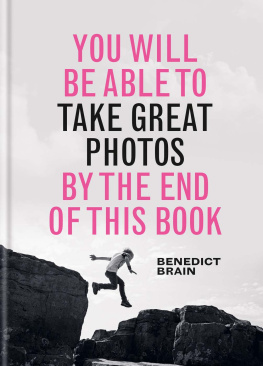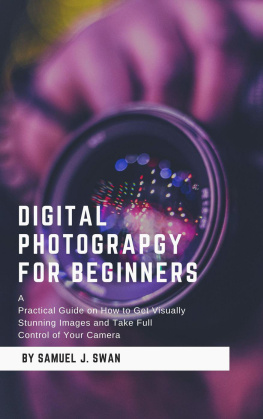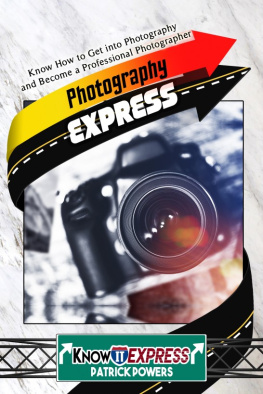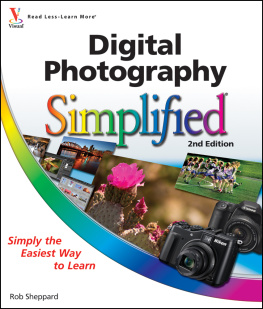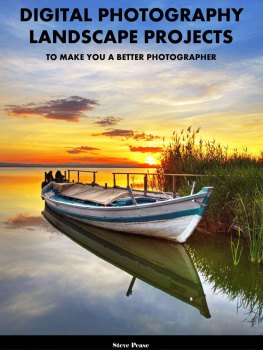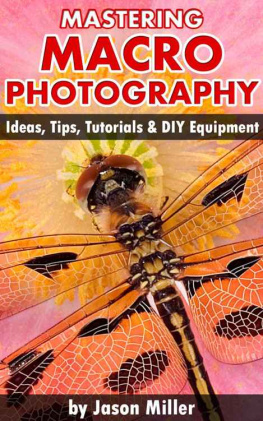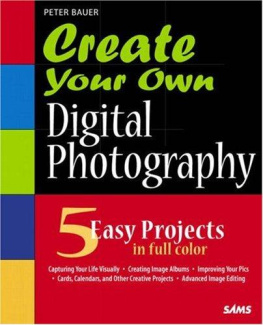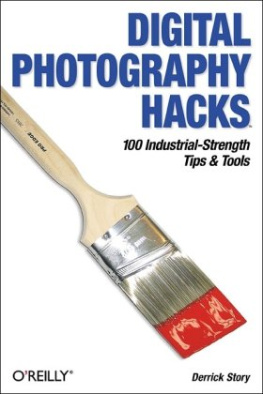Contents
Guide


CONTENTS
HOW TO USE THIS EBOOK
Select one of the chapters from the and you will be taken straight to that chapter.
Look out for linked text (which is in blue) throughout the ebook that you can select to help you navigate between related sections.
You can double tap images and tables to increase their size. To return to the original view, just tap the cross in the top left-hand corner of the screen.
Great photographs can be made in your own backyard Recognize that fact and the photographic world is your oyster.
FOREWORD
You Will Be Able to Take Great Photos by the End of This Book must be the longest book title ever, but it certainly catches the eye and this is what Ben Brain is all about. His enthusiasm for the medium bubbles through his easy-to-follow descriptions of the many approaches to photography, as he explains how important it is to visually engage with the viewer and make them aware that the most lasting images are usually those that are different from what went before.
In addition to tackling the cornerstones of photography, such as composition, light, timing and exposure, he dips into historical and contemporary practices to contextualize the medium. Ben also explains that great photographs can be made in your own backyard, because it is a fact that most of the time we are where we are rather than where we would like to be. Recognize that fact and the photographic world is your oyster and speaking of metaphors, Ben also uses his own work to emphasize how photography can transcend the information that is in front of the camera. If readers come to that conclusion too, it will confirm this book as one that makes a valuable contribution to our understanding of this most glorious medium.
Professor Paul Hill MBE, FRPS, DFine Art, DArts
www.hillonphotography.co.uk
INTRODUCTION
Welcome to the next step of your photographic journey. Perhaps youre trying to find your photographic voice or realize your creative vision, or you want to comment on the world around you with a camera. Whatever your aspirations, if youre keen to explore your creativity and discover new ways to engage with the world through the photographic image youre in the right place.
Photography is everywhere. Literally. Wherever you look, photography will be part of the story. Just take a moment to consider how many photographs in one form or another youve seen today hundreds probably. Its estimated that nearly one and a half trillion photos were taken in 2020, thats a number this long: 1,500,000,000,000. From fancy-pants DSLRs to smartphones, digital cameras have made photography easier and more accessible than ever before, and a staggering number of people are now taking photographs every second. Essentially anyone with a smartphone in their pocket has access to a sophisticated and high-quality camera. Theres nothing wrong with this in many ways its wonderful but it means it is harder to make yourself stand out, especially if you want to use photography as a way of engaging with and commenting on the world around you. The onslaught of photographs cascading through social feeds can feel overwhelming, and if you want your voice to be heard, or rather seen, the sheer volume of images can feel daunting. Knowing where to start can be paralyzing if you want to contribute in a meaningful way. A good photograph is not usually about complicated techniques or what camera was used but rather about the attitude, the approach and the vision of the photographer. This book seeks to explore photography from this perspective and I hope that by the end of this book, you will have the creative tools and, more importantly, the attitude to make great photos.

A good photograph is not usually about complicated techniques or what camera was used, but rather about the attitude, the approach and the vision of the photographer.
BENEDICT BRAIN @benedict_brain
HOW TO USE THIS BOOK
This book is not a typical how-to-take-photos book. While some of the core skills are touched upon in the first couple of chapters, the essence of the book is about looking, seeing and finding creative ways to approach image-making and using them to engage in the world through the visual language of photography. We will explore ways in which photography can be used as a tool for self-expression or as a means to comment on the world in a meaningful way.
The first part of this book will look at some essential photographic skills such as composition, understanding light, timing, exposure and some basic camera techniques. We will also touch on some of the philosophical aspects of photography, art and image-making and consider some of the core concepts and approaches and how they fit into the history of photography. Working through this section will give you the knowledge and key skills to call upon when needed, and it will inform your creative repertoire.
Once youve got the basics down, I suggest you jump straight into the projects section and start exploring the ideas and images for inspiration. The photographs in the projects have been broken down in such a way that you will be able to see not only how they were made but also, more importantly, why they were made, what makes them work, what they say and how they might communicate ideas or emotions, or comment on the world. Through nononsense, jargon-free annotations, youll discover ways to incorporate these techniques into your own photographs.
You will find a wide range of images from fun and frivolous experiments for the sheer joy of messing around within images to more serious, visual responses to aspects of the world we live in. Wherever you are on your photographic journey, there will be something for you to get your creative teeth into. So lets get started


PHOTOGRAPHY TOOLS
The essence of this book is about creativity, storytelling and finding your photographic voice. Its not an obsessively technical manual bogged down with jargon and explanations on how to use fancy kit, accessories and complicated techniques. At the end of the day, the best camera is the one that you have with you and that might well be a simple smartphone camera. Theres no need to get hung up on lots of expensive gear light, looking, composition and storytelling are more important. That said, tools are important too, so its good to have a perspective when choosing what to use or even buy. So, over the next few pages, well touch on some of the essentials.
ANATOMY OF A DIGITAL CAMERA
A proper camera allows you to take more control; youll be able to change ISO, aperture and shutter speed, which we will talk about later. Youll also be able to change lenses.
Committing to a camera system is an important decision, and there are so many choices it can make the mind boggle. Your budget will most likely be the most significant factor. You may only acquire one camera and one lens when you start, but you will probably want additional lenses and accessories as you grow creatively.

